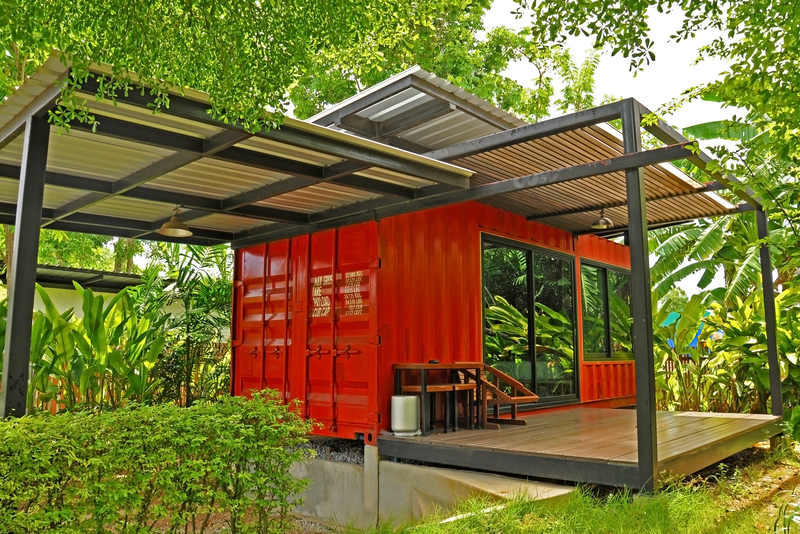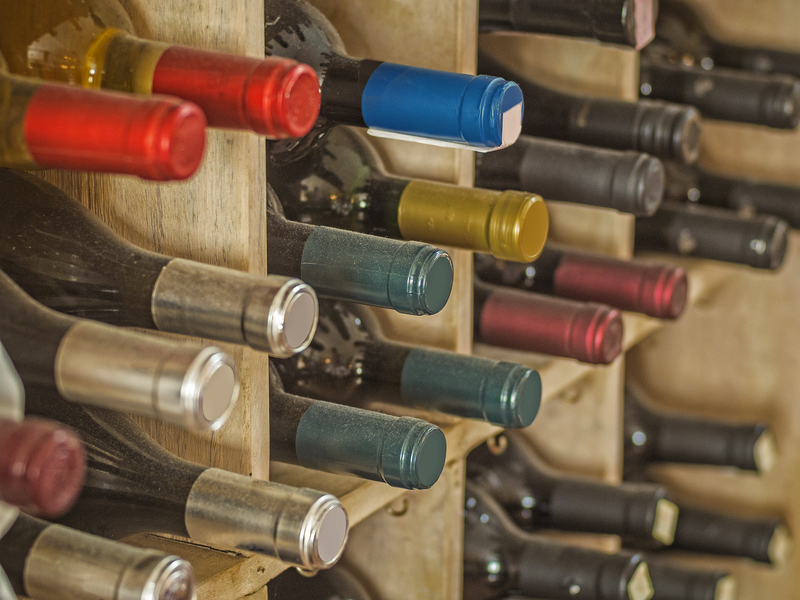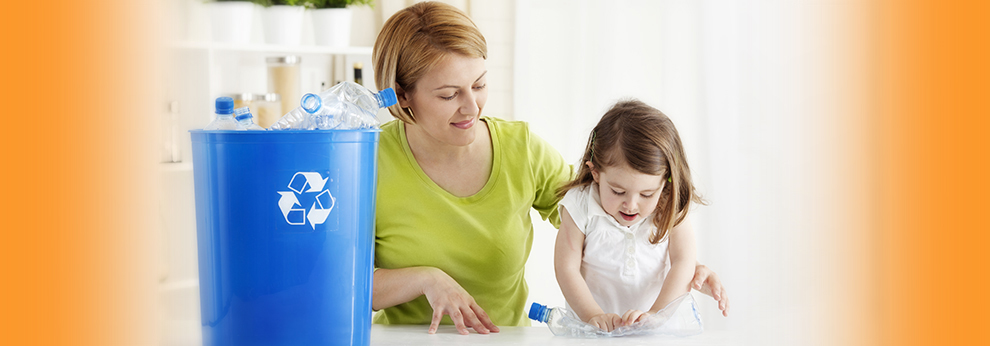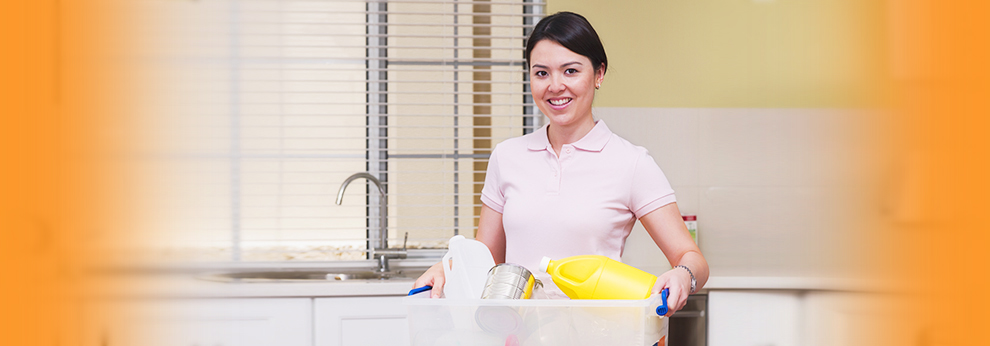Eco-Friendly Disposal Methods for Pots and Pans
Posted on 18/09/2025
Eco-Friendly Disposal Methods for Pots and Pans: Sustainable Solutions for a Cleaner Planet
In today’s rapidly evolving world, making environmentally conscious decisions is more important than ever. One often-overlooked aspect of sustainability is how we manage and dispose of our household items, especially old or damaged cookware. Pots and pans, commonly made from various metals and coatings, can pose unique challenges when it comes to environmentally responsible disposal. This comprehensive guide will explore eco-friendly disposal methods for pots and pans, providing you with practical, planet-friendly solutions.
Why Disposing of Cookware Matters
It’s easy to toss an old skillet into the garbage and forget about it. However, improper disposal often means usable materials go to waste, end up in overflowing landfills, or potentially leach harmful chemicals into the soil and water. By choosing eco-friendly disposal options for pots and pans, you contribute to resource conservation, pollution reduction, and a healthier environment for future generations.

Common Materials Used in Pots and Pans
Before selecting the right eco-friendly cookware disposal solution, understanding what your pots and pans are made of is crucial. This ensures proper sorting and handling for recycling or repurposing efforts.
- Stainless Steel: Durable and corrosion-resistant, often used for high-quality cookware.
- Aluminum: Lightweight and heat-conductive, frequently found in both budget and premium cookware.
- Copper: Excellent heat conductor, common in top-tier or specialty pans.
- Cast Iron: Known for its longevity and excellent heat retention.
- Non-stick Coatings (Teflon or Ceramic): Add convenience, but some coatings may contain chemicals problematic for recycling.
- Enamel-Coated: Often found on cast iron or steel, adds color and prevents rust.
What Makes Disposal of Cookware Challenging?
Most pots and pans are designed to withstand significant wear and tear, meaning they can take centuries to break down in landfills. Non-stick and multi-layered cookware also contain materials that complicate recycling. Because of these factors, it’s important to seek environmentally-friendly disposal methods for pots and pans rather than simply discarding them in the trash.
Eco-Conscious Options for Pots and Pans Disposal
Let's explore the most sustainable, eco-friendly ways to dispose of old pots and pans, ensuring minimal environmental impact and maximum benefit to the community.
1. Donate Usable Cookware
Reusing before recycling is always best. If your cookware is still functional, consider donating it to:
- Charities or thrift stores that accept kitchenware.
- Local shelters, food banks, or community kitchens that may need extra supplies.
- Friends, family or students setting up new homes.
By extending the lifespan of your pots and pans, you reduce overall waste and support those in need.
2. Sell or Give Away Online
Websites such as Craigslist, Facebook Marketplace, Freecycle, and Nextdoor make it easy to pass on cookware to others who may need it. Many people seek inexpensive or free household goods, making this a quick and eco-friendly way to clear out your cupboards.
3. Recycle Your Old Pots and Pans
If your cookware is broken, worn-out, or no longer safe for use, recycling is a highly recommended eco-friendly solution for pots and pans disposal. Here’s how to get started:
- Check Local Recycling Guidelines: Contact your municipal recycling program to see if they accept cookware. Some only take certain metals (such as aluminum or stainless steel) and may require removal of non-metal parts.
- Visit a Scrap Metal Facility: Most metal recycling centers accept cookware, regardless of brand or how old it is. Remove any plastic handles or non-metal attachments.
- Special Programs for Non-Stick or Coated Cookware: Not all recyclers can process pots and pans with non-stick or ceramic coatings. Specialized Terracycle programs may accept these items.
Remember to clean your items before dropping them off. Recycling not only diverts materials from landfills but also reduces the energy and resources needed to produce new products.
4. Upcycle Your Cookware Into Something New
Get creative! Damaged or outdated pots and pans can often be repurposed for decorative or practical use in and around your home. Try these upcycling ideas:
- Plant Pots: Turn deep pans or small pots into quirky planters for herbs or flowers.
- Storage Bins: Use old cookware to store craft supplies, toys, or small garden tools.
- Wall Art: Vintage pans can add rustic charm when displayed as decor in a kitchen or backyard space.
- Bird Feeders: Attach an old pan to a pole or tree branch and fill it with birdseed.
- Organizers: Smaller pots can corral office or workshop supplies.
When you upcycle, you not only save money and reduce waste but also bring a unique story and character to your living space.
5. Return Programs and Manufacturer Take-Backs
Some brands offer take-back programs for their products, making environmentally responsible disposal easy. Leading cookware brands such as Le Creuset, GreenPan, and Calphalon have recycling initiatives or partnerships with recycling companies. Check the brand’s website or get in touch with customer service to inquire about their take-back, trade-in, or recycling options.
Additionally, major retailers sometimes offer trade-in events or discounts when you return old cookware while purchasing new items--another great way to ensure proper disposal and save some money.
How to Prepare Cookware Before Eco-Friendly Disposal
Proper preparation ensures your pots and pans are safe and suitable for donation, recycling, or upcycling. Follow these essential steps:
- Clean Thoroughly: Remove all food residue and wash your cookware so it's hygienic for new owners or recycling staff.
- Remove Non-Metal Parts: Unscrew plastic or wooden handles, glass lids, or rubber feet if required by recycling centers.
- Inspect for Damage: Ensure items you plan to donate or sell are free from sharp edges or dangerous chips.
Properly prepped items are safer for handling and more likely to be accepted at donation centers or recycling facilities.
Environmental Impact of Traditional Cookware Disposal
Discarding old pots and pans in the general trash has significant repercussions:
- Resource Waste: Metals like steel and aluminum are highly recyclable; dumping them squanders precious resources.
- Landfill Overflow: Cookware is bulky and long-lasting, contributing to unsustainable landfill growth.
- Toxic Leaching: Some non-stick and coated pans may release chemicals into the environment as they degrade.
By choosing eco-friendly ways to dispose of cookware, you actively reduce these negative impacts and champion sustainability.
Frequently Asked Questions (FAQ)
Can Non-Stick Pans Be Recycled?
It depends. Many non-stick coatings, especially older Teflon-based versions, can complicate the recycling process since they contain chemicals unrecyclable in standard facilities. Some municipalities accept them after removal of handles, while others do not. Specialized programs or scrap metal yards may be your best bet.
Are There Hazards to Disposing of Old Cookware?
Yes. Pans with peeling non-stick coatings or those containing lead glaze and other toxic materials (sometimes found in very old or imported cookware) should never be placed in regular recyclables or trash. Look for hazardous waste collection days or contact your local recycling authority for guidance.
Can Enamel-Coated Pans Be Recycled?
Typically, scrap metal yards will accept them. However, some may require you to break or remove non-metal components first. Always check with your chosen recycling facility.
What About Ceramic, Glass, or Stone Cookware?
These materials are generally unsuitable for metal recycling. Try repurposing, donating, or taking advantage of specialized recycling programs if available locally.
Tips for Prolonging the Life of Your Pots and Pans
The most sustainable approach is to keep your cookware in use for as long as possible. Here are a few tips to help extend their lifespan:
- Use wooden or silicone utensils to avoid damaging non-stick surfaces.
- Hand-wash your cookware if possible, even if it’s labeled dishwasher safe.
- Avoid extreme temperature changes that can warp or crack pans.
- Follow the manufacturer’s care instructions for cleaning and storage.
With proper care, quality cookware can serve your kitchen for decades, minimizing the need for frequent replacement or disposal.

Summary: Making a Greener Choice for Kitchenware Disposal
Responsible and eco-friendly disposal of pots and pans is a meaningful step toward a more sustainable lifestyle. Whether you choose to donate, recycle, upcycle, or utilize take-back programs, your actions make a difference. By taking these extra steps, you lessen your environmental impact, support community initiatives, and promote a cleaner, healthier planet for all.
Next time you replace your old pots or pans, consider one of these environmentally-friendly cookware disposal methods--because every little effort counts in the journey towards sustainability.
Key Takeaways
- Reuse and donate whenever possible--it’s the greenest option.
- Recycle at scrap metal facilities after removing non-metal components.
- Get creative with upcycling for unique home and garden projects.
- Look for take-back or trade-in programs from retailers or manufacturers.
- Dispose of hazardous or coated cookware thoughtfully and as per local guidelines.
Further Reading
Make eco-friendly disposal of pots and pans a priority and inspire others to follow your lead for a greener tomorrow!



